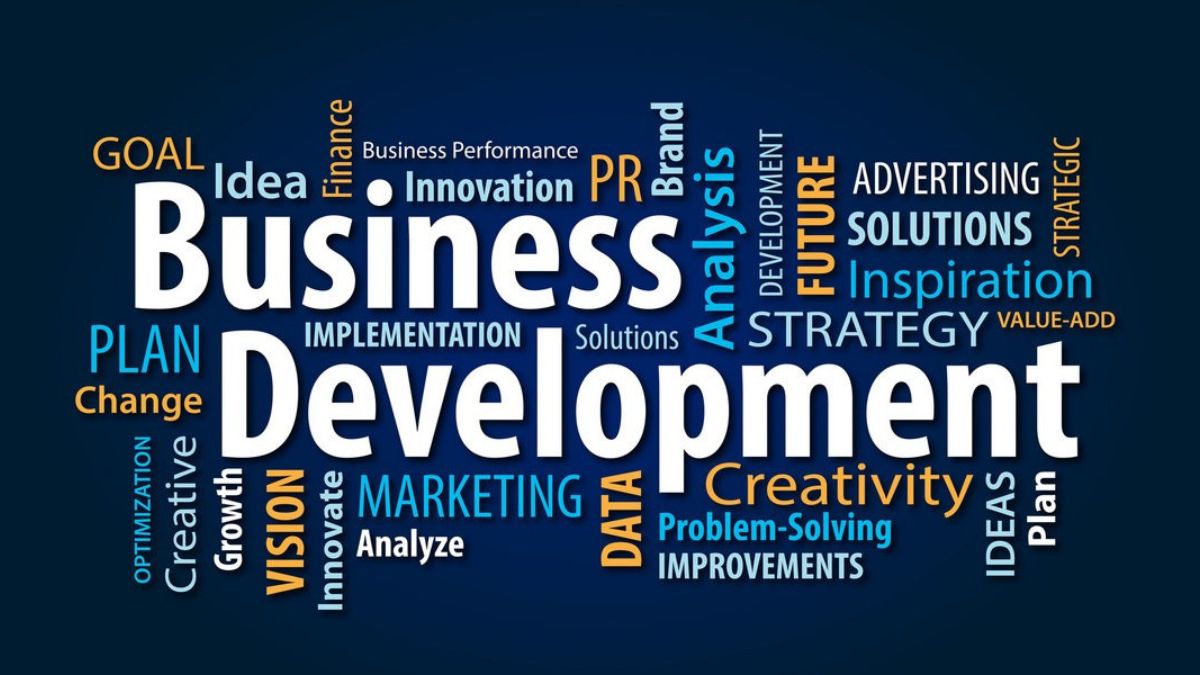Every successful company shares one trait: they master the art of strategic growth. While some businesses stumble through expansion by chance, thriving organizations approach growth systematically through business development a discipline that transforms potential into profit and relationships into revenue.
Business development encompasses far more than sales or marketing alone. It’s the strategic process of identifying, nurturing, and capitalizing on opportunities that drive long-term growth. This comprehensive approach combines market analysis, relationship building, strategic partnerships, and revenue optimization to create sustainable competitive advantages.
Understanding business development principles can mean the difference between a company that merely survives and one that dominates its market. Whether you’re a startup founder, sales professional, or executive looking to accelerate growth, mastering these fundamentals will provide you with the tools to build lasting business success.
What is Business Development?
Business development is the strategic practice of identifying growth opportunities and building the relationships, partnerships, and processes needed to capitalize on them. Unlike traditional sales, which focuses on closing individual transactions, business development takes a broader view of sustainable growth.
The discipline encompasses several key areas:
Strategic partnerships form the backbone of many successful business development initiatives. These collaborative relationships allow companies to access new markets, share resources, and create mutual value. A software company might partner with a consulting firm to expand its reach, while the consulting firm gains access to cutting-edge technology solutions.
Market expansion involves identifying new customer segments, geographic regions, or product applications. This requires deep market research and careful analysis of competitive landscapes. Companies that excel at market expansion don’t just chase any opportunity—they target segments where their unique value proposition creates meaningful differentiation.
Revenue optimization focuses on maximizing the value extracted from existing relationships and assets. This might involve developing new pricing models, creating additional service offerings, or finding ways to increase customer lifetime value through strategic upselling and cross-selling initiatives.
Relationship management serves as the foundation for all business development activities. Strong relationships with customers, partners, suppliers, and industry influencers create the trust and credibility necessary for successful growth initiatives.
Key Business Development Strategies
Build Strategic Partnerships
Strategic partnerships accelerate growth by combining complementary strengths. Technology companies often partner with implementation specialists to provide end-to-end solutions. Retailers collaborate with logistics providers to improve customer experience. Manufacturing firms join forces with distributors to access new geographic markets.
Successful partnerships require clear value propositions for all parties involved. Before approaching potential partners, define what unique assets your organization brings to the table and what specific benefits you’re seeking. The most enduring partnerships create win-win scenarios where each party’s success directly contributes to the other’s growth.
Focus on Customer Success
Customer success has evolved from a support function into a core business development strategy. Companies that prioritize customer outcomes build stronger relationships, increase retention rates, and generate more referrals. This approach transforms customers into advocates who actively promote your solutions within their networks.
Implementing customer success strategies involves understanding client objectives, measuring relevant outcomes, and continuously optimizing your offerings to deliver maximum value. When customers achieve their goals using your solutions, they become natural sources of case studies, testimonials, and referrals that fuel organic growth.
Leverage Data and Analytics
Modern business development relies heavily on data-driven decision making. Analytics tools help identify the most promising opportunities, track relationship quality, and measure the effectiveness of different growth strategies. Companies that invest in robust data systems can spot trends earlier, allocate resources more effectively, and adjust strategies based on real performance metrics.
Customer relationship management (CRM) systems serve as the foundation for data-driven business development. These platforms track interaction history, opportunity pipelines, and relationship strength across your entire network. Advanced analytics can reveal patterns that inform strategic decisions about resource allocation and target market prioritization.
Develop Thought Leadership
Thought leadership positions your organization as a trusted authority within your industry. This strategy involves sharing valuable insights, participating in industry discussions, and contributing to solving common challenges faced by your target market. Companies that establish thought leadership enjoy increased visibility, credibility, and inbound interest from potential customers and partners.
Content marketing, speaking engagements, industry publications, and strategic social media presence all contribute to thought leadership development. The key lies in consistently providing genuine value rather than promotional content. When your insights help others solve problems or achieve better outcomes, your organization becomes a preferred partner for growth-oriented initiatives.
Essential Business Development Skills
Strategic Thinking
Business development professionals must think strategically about market dynamics, competitive positioning, and long-term growth trajectories. This involves analyzing complex market conditions, identifying emerging trends, and connecting seemingly unrelated opportunities into coherent growth strategies.
Strategic thinking requires the ability to balance short-term tactical needs with long-term strategic objectives. Successful business developers can evaluate opportunities through multiple lenses—financial impact, strategic alignment, resource requirements, and competitive implications—to make informed decisions about where to focus their efforts.
Relationship Building
Strong relationships form the foundation of all successful business development activities. Building meaningful professional relationships requires genuine interest in others’ success, consistent communication, and the ability to create mutual value over time.
Effective relationship builders understand that trust develops gradually through consistent actions and authentic interactions. They invest time in understanding others’ challenges and objectives, look for ways to provide value without immediate reciprocity, and maintain regular contact even when there’s no immediate business opportunity.
Communication Excellence
Business development requires exceptional communication skills across multiple channels and contexts. From initial outreach emails to executive-level presentations, every interaction shapes perceptions and influences outcomes. Clear, compelling communication helps build trust, convey value propositions, and facilitate collaboration.
Strong communicators adapt their message and style to their audience while maintaining authenticity. They can simplify complex concepts for non-technical stakeholders, present compelling business cases to executives, and facilitate productive discussions between diverse groups of stakeholders.
Negotiation and Deal Structuring
Successful business development often culminates in negotiations that determine partnership terms, pricing structures, or collaboration frameworks. Effective negotiators focus on creating value for all parties rather than simply maximizing their own outcomes.
This skill involves understanding different stakeholders’ priorities, identifying creative solutions that address multiple objectives, and structuring agreements that provide clear benefits and manageable risks for everyone involved. The best negotiators prepare thoroughly, listen actively, and remain flexible while advocating for their organization’s interests.
Measuring Business Development Success
Business development success requires clear metrics and regular evaluation. Key performance indicators should align with strategic objectives and provide insights into both short-term progress and long-term growth potential.
Revenue metrics track the financial impact of business development activities. These include new revenue from partnerships, expansion revenue from existing clients, and revenue growth rates across different market segments. While revenue provides clear success indicators, it’s important to track leading indicators that predict future revenue generation.
Relationship metrics measure the health and depth of professional relationships. These might include response rates to outreach efforts, meeting acceptance rates, referral volume, and partner engagement levels. Strong relationship metrics often predict future business development success.
Pipeline metrics track opportunity development from initial identification through closure. Conversion rates between pipeline stages, average deal sizes, and sales cycle lengths provide insights into process effectiveness and resource allocation needs.
Market expansion metrics measure progress in new segments or geographic regions. These include market penetration rates, brand awareness levels, and competitive positioning assessments. Market expansion metrics help evaluate the long-term potential of different growth strategies.
Building Your Business Development Plan
Creating an effective business development plan starts with clear strategic objectives aligned with overall company goals. Define specific growth targets, identify target markets and customer segments, and establish timeline expectations for different initiatives.
Market research forms the foundation of strategic planning. Understand competitive dynamics, customer needs, industry trends, and regulatory considerations that might impact your growth strategies. This research should inform decisions about resource allocation and strategic priorities.
Resource planning ensures that business development initiatives receive adequate support. Consider staffing needs, technology requirements, budget allocations, and timeline constraints that might impact execution. Successful business development requires sustained investment and consistent execution over time.
Regular review and adjustment processes keep business development efforts aligned with changing market conditions and company priorities. Establish regular checkpoints to evaluate progress, assess strategy effectiveness, and make necessary course corrections.
Your Path to Business Development Excellence
Business development represents one of the most impactful investments organizations can make in their future growth. Companies that approach business development strategically—with clear objectives, robust processes, and dedicated resources—consistently outperform competitors who rely on ad-hoc growth efforts.
Success in business development requires patience, persistence, and strategic thinking. The most valuable relationships and partnerships develop over time through consistent value creation and authentic engagement. Organizations that commit to long-term business development excellence position themselves for sustainable competitive advantages and accelerated growth.
Start by assessing your current business development capabilities and identifying specific areas for improvement. Whether that means strengthening relationship-building processes, investing in better analytics tools, or developing strategic partnership strategies, taking action on these fundamentals will create momentum toward your growth objectives.
The companies that dominate tomorrow’s markets are building those capabilities through strategic business development efforts today. Your commitment to these principles will determine whether your organization simply participates in future growth or leads it.











